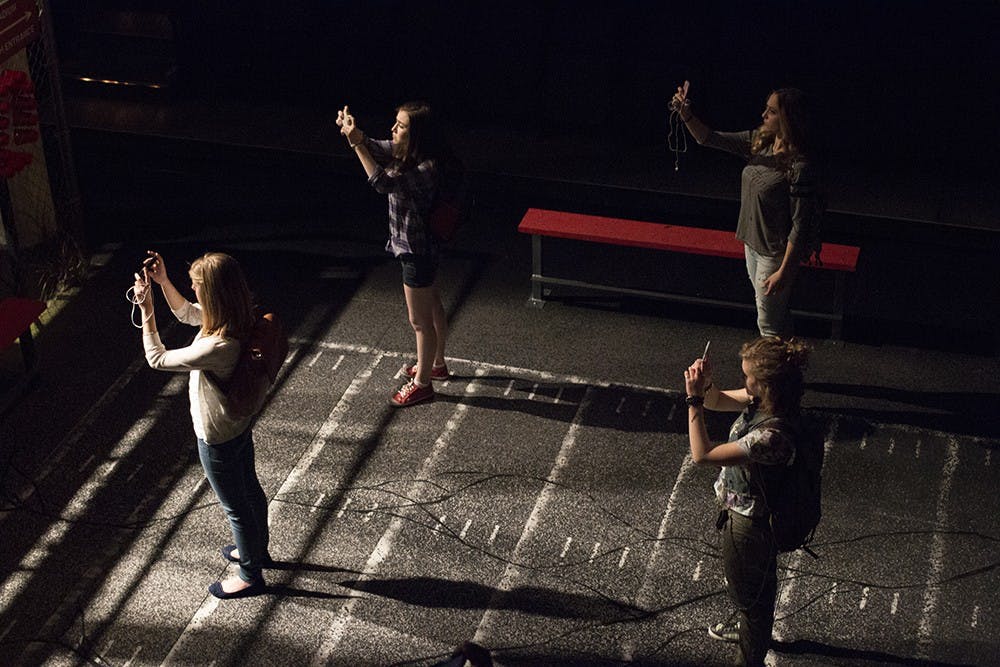“As soon as I saw that, it immediately hit me because I experienced it all firsthand,” Brettell said. “I definitely wanted to dive deeper and see what it was all about.”
Brettell lived in Steubenville, Ohio, during the summer of 2012, when a high school girl was sexually assaulted by a few of her football player peers at a party. This case became widespread once the football players tweeted, posted pictures and published videos of the assault on social media. Once the posts reached students and parents in the town, national news recognized not only the issue of sexual assault but social media’s status as a main method of ?communication.
Based loosely on that event, “Good Kids” opened Friday at the Wells-Metz Theatre. Its goal was to explain the true definition of consent and the power social media holds in society today.
Prior to the show, a panel of individuals from the sexual assault violence support networks located on campus and in the Bloomington area gathered in the Theatre Building to discuss the issue of sexual assault.
After each of the panelists introduced themselves, Jonathan ?Michaelsen, director and IU Theatre department chair, asked participants if they felt sexual assault is an issue that has gotten better or worse over the years.
“I’ve worked here since 1990, and I personally feel that I am far busier now than I have ever been in terms of clients,” said Debbie Melloan, a counselor for Sexual Assault Crisis Services. “I want to believe it’s that more people feel comfortable coming for help, and I think we as a university and the culture at large know there’s a lot more openness talking about ?sexual assault and coming forward and seeking services.”
Carol McCord, associate dean of students at IU, said she doesn’t think the number of assaults has increased but that it’s been a tradition in our culture to not talk about it.
“Even with the best possible numbers collected, we’re only getting a sense of the people who have come forward to somebody,” ?McCord said.
As the panel concluded, people started making their way into the theater. Pop songs like “All About That Bass” and “#SELFIE” played in the background and high school football posters filled the walls.
“We went into it talking about the physical environment and starting with this idea of this football culture,” Michaelsen said. “We’ve created a world that I think is simple but provocative.”
After Brettell saw the play, he said he told the cast and crew how impressed he was with how accurate the play matched the real events.
“The first thing I said to everyone involved in the play was that it was like me sitting at home just with a huge screen in front of my face with the event on replay,” Brettell said. “The same feelings, the same eeriness and questions I had at that time. Even though I knew what the end result was, I was still thinking what was going to happen.”
Brettell said he agreed with one of the lines in the play that said there’s nothing to do in the town, and when kids get bored, they get in trouble.
“It’s the honest truth,” Brettell said. “There’s nothing to do in that city. If you’re a high school kid, there’s nothing to do. So you throw parties, and when you’re underage drinking, bad things happen.”
Brettell said a lot of messages can be learned from the play by audience members, whether students or adults.
“If you’re an adult, it can shine light to wonder if this is happening in your town’s high school,” Brettell said. “If you’re a kid, you might look at it as saying no matter how invincible I think I am, you can still get caught when you do wrong. If you just watch it with an open mind and heart, you can really get a idea of what some people go through.”






